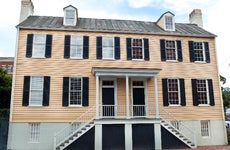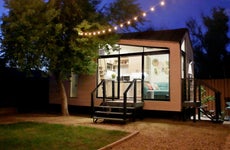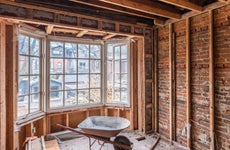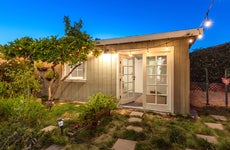What is a cottage-style home?
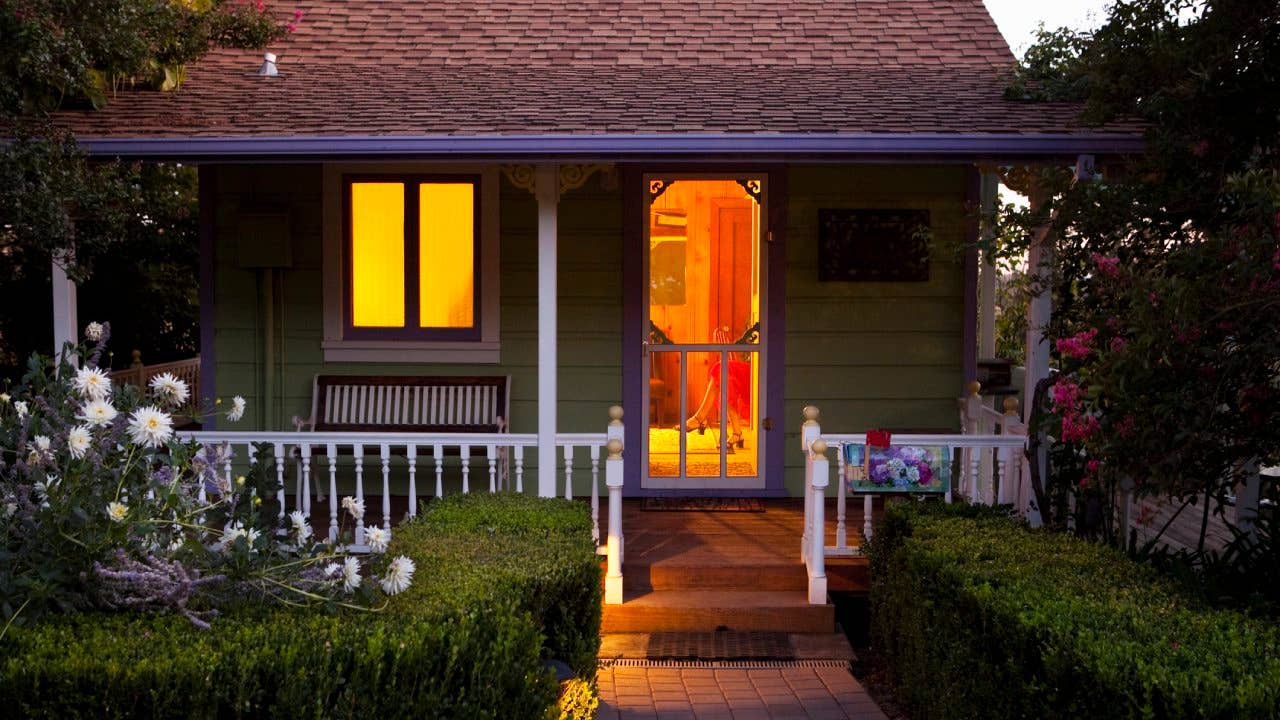
The Bankrate promise
At Bankrate we strive to help you make smarter financial decisions. While we adhere to strict , this post may contain references to products from our partners. Here's an explanation for .
Once upon a time, there were people who lived in small huts on a nobleman’s land. They were known as cotters, and their homes as cottages (both came from the Latin word “cotagium”). These simple, single-story dwellings were usually made of stone or wood, with thatched roofs and a prominent chimney.
The feudal system has faded, but cottages remain. And while we often associate them with rustic settings and picturesque facades, today they can be done in any style and located anywhere, from a city block to a country lane, within the woods or in a seaside resort. But cottages are still defined by their cozy size — no more than 1,000 to 1,200 square feet, roughly half the size of the average American house.
Who might be looking for such a residence? Cottages are popular among buyers in search of a vacation home or a starter home — especially one with ingenious, handcrafted features. “In cottage homes, small artistic details were made with pride,” says real estate agent Shannon Wineman with the PorchLight Realty Team in San Diego. “Nooks for shelves, cabinets, arched doorways” are all appealing to millennial homebuyers in particular, she finds.
Let’s continue reading the tale of cottages and how much they set a buyer back.
What’s the history of cottage style?
Cottage homes date back to the late Middle Ages (about 1400-1500). They originated in England or Russia, depending on who you ask, but they soon spread, and served a similar purpose across the U.K. and Europe. Peasant farmers would occupy these residences — the original tiny homes — on large plots of land owned by the aristocrats for whom they labored.
During the late 19th century, as it spread to the U.S., a cottage morphed from meaning a worker’s residence to a more generic small house, located anywhere outside a metropolitan area (and sometimes not even so small — Gilded Age millionaires dubbed their elaborate mansions in Newport, Rhode Island and other resorts “cottages.”) As a vacation or country home for the upper and middle classes, cottages kept their quaint size but grew modernized, kitted out with plumbing, heating and electricity. They often sprouted small second stories.
Today, some people choose to live in a cottage full time, especially a historic one. Their intricate, old-school masonry and other sorts of craftsmanship makes them both sturdy and aesthetically pleasing, Wineman explains. “There is a ‘made with care’ vibe that matters a lot to many people right now. The idea of living in something that was mass-produced is not as desirable for some buyers.”
Different types of cottage homes
Given their long history and wide geographic popularity, cottages come in a variety of styles. Some of the most common include:
- English: When people picture a cottage home, an English-style cottage is often what they think of. This style likely has thatched roofs and gardens right up against the structure. Most English cottages are single story.
- French: French country cottages often feature stone facades, brickwork and clay tile roofs. Many properties have romantic vines crawling up the side of the building and bright exterior shutters. This type of cottage often boasts an elegant interior.
- Coastal: Many American cottages fall into this category, found waterside in places like Cape Cod and Nantucket, Massachusetts, on the East Coast; Carmel and Monterey, California, on the West Coast. These homes usually have broad front porches and wooden shingles that may turn gray over time. Expect a lot of white trim and big bay windows.
- Nordic: Many cottages in places like Sweden and Norway serve as countryside getaways. They are often constructed of wood and painted bright red (a simple, white aesthetic dominates the interior).
- Canadian: Like American cottages, Canadian cottages are usually found near a body of water instead of out in the country. They are apt to have a second story.
- Bungalow: Smaller versions of this architectural style, popularized in turn-of-the-20th-century America, are often classified as cottages (especially those in the Craftsman style). Made of materials indigenous to their region, bungalow houses stand one- to one-and-a-half stories tall with front porches shaded by low-slung, gabled roofs supported by exposed rafters or beams. Interiors often feature built-in cabinetry and double-hung windows.
What characterizes cottage style?
You can find cottages with a variety of features, but these cozy properties carry some common characteristics.
External features
Some common elements found on the outside of cottage properties include:
- Cedar shingles
- Arched doorways
- Stone or brick accents
- Chimneys
- Asymmetrical design
- Sharply pitched roofs
Outdoor spaces are often valued in a cottage, because the interior is so small, so you can also find a lot of exterior accents, like:
- Wraparound porches
- Back decks
- Designated seating areas
Internal features
Cottages often integrate a lot of natural materials in their interior design. The inside of a cottage might feature:
- Exposed ceiling beams
- Exposed brick or stone walls
- Fireplace
- Arched doorways
- Built-in shelves and nooks
- Stone backsplash
What do cottage-style houses cost?
The national average selling price for a cottage runs about $236,000, according to a recent survey of real estate listings, “The Most Popular and Valuable House Styles in the U.S.” Building one costs about the same, on average $260,000 — though, depending on size, materials, features and location, the range can be between $120,000 to $500,000.
The small square footage of most cottages may limit their price tags in many markets. That said, cottage homes are often located in resort towns and vacation destinations, where real estate is expensive. Also, “if a cottage is located in a community that is going through gentrification and that community is very walkable, you will see prices soar relative to other home types in the area,” Wineman notes.
Given that cottages feature attributes like built-in breakfast nooks and custom shelving, restoring an older one can be expensive. But Wineman also advises residents to look out for tax credits. California’s Mills Act program, for example, offers incentives for purchasers of historic properties. “If the home qualifies, a homeowner can save from 40-70 percent of their property taxes. The rationale is that the owners will use those funds to keep the historic home in good condition,” she says.
Final word on cottage style houses
Cottage homes can be ideal for a couple or a small family in search of simple living. What these homes lack in spacious floor plans and light-filled interiors they more than make up for in character and unique features like arched interior doorways and custom-built bookcases. The prominence of exposed natural materials like wooden beams and real stone accents give cottage homes more personality than many conventional homes.
Keep in mind that buying an older cottage could also mean inheriting a certain amount of plumbing or wiring challenges and, if a landmarked property, limitations regarding approved changes. That being said, a cozy cottage may be an affordable home purchase and inspire you to live more efficiently than a modern property.
Related Articles
